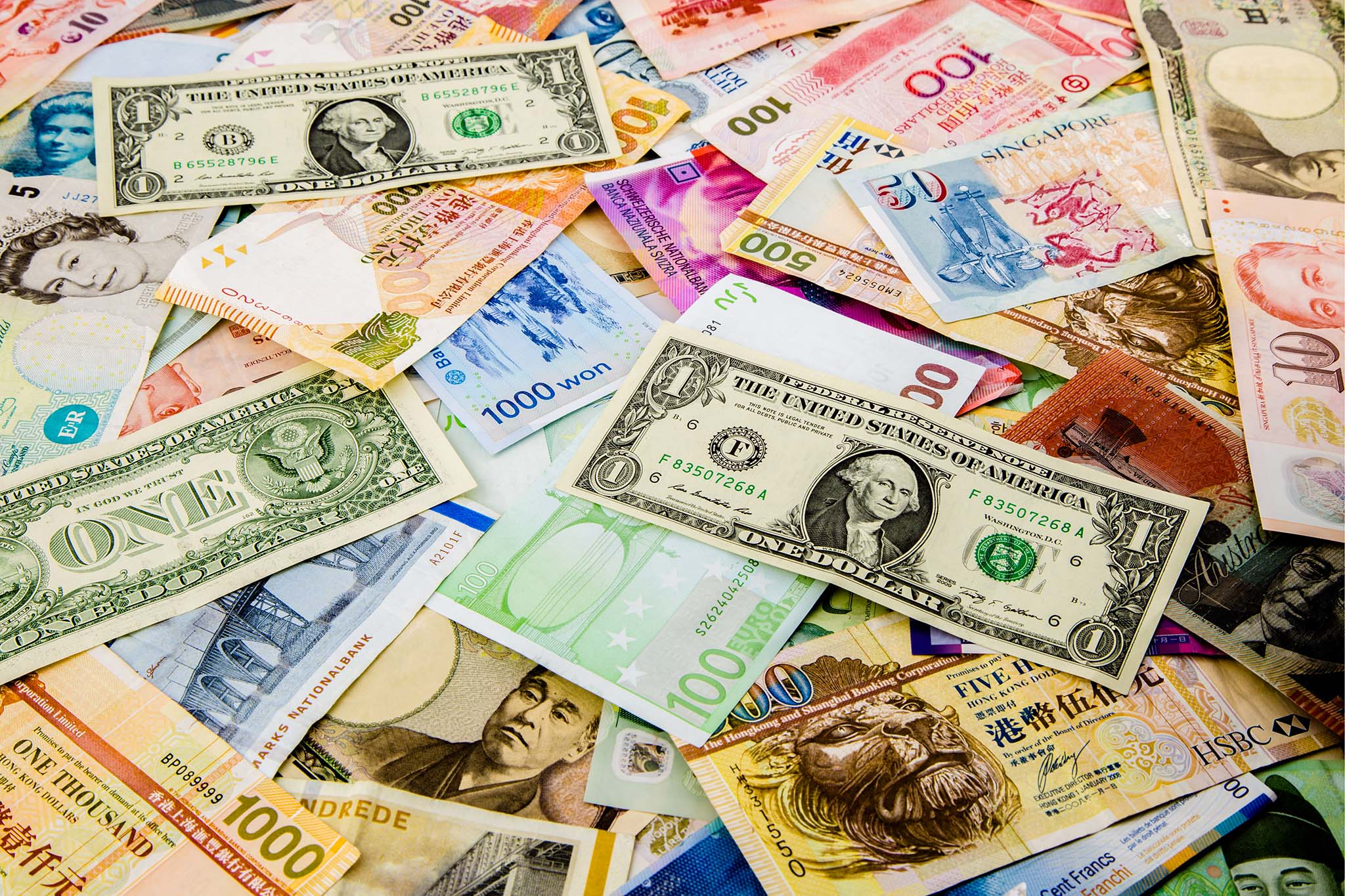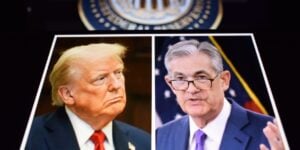
Money is an indispensable part of modern economic activity. It was not always so: barter, where goods trade directly for other goods, was the norm for most of human history. But the rise of money as an economic institution greatly increased humanity’s productive potential.
Think about how hard it is to get the goods you want to consume in a barter economy. You first must find someone who has the good you want. But that person must also want the good you offer in exchange. This is known as the “double coincidence of wants” problem. The need to find a double, or mutual, coincidence of wants is effectively a large transaction cost—a kind of trade barrier associated with general economic activity. When we use money, however, this problem is eliminated. The seller automatically wants what the buyer is offering because the buyer is offering the ability to purchase whatever the seller wants. And that effort that would have been devoted to finding the right trading partner can be put to more productive uses.
But what makes money, well, money? Money is a commonly accepted medium of exchange. It’s the economy’s most saleable (liquid) item: the one we trade, and accept in trade, for all others.
Money also tends to determine the unit of account: prices are listed in terms of money, because it is convenient. And that makes comparing potential consumption and production plans much easier. But money need not determine the unit of account. We can use a money while pricing goods and services in some other unit. It’s the medium of exchange function that matters. That’s the essence of money.
Money as a Spontaneous Order
How does a society go from direct exchange, or barter, to indirect exchange, where money is used? How did we get money? Where did it come from?
Monetary economists are generally split into two camps. The first follow the late 19th century Austrian economist, Carl Menger. Menger put forth a “spontaneous order” theory of money, by which the decentralized actions of many individuals, each trying to achieve their separate goals, resulted in a snowball effect. That snowball effect resulted in a money-using economy even though no one intended that outcome at the outset.
The argument looks like this. Suppose you’re a rancher. You raise cattle. While cattle are valuable for beef and milk, they are not particularly easy to trade with. Cattle are costly to store: they require lots of upkeep. They also vary a lot in quality: one cow is often very different from another. And cows are hard to split up into smaller units, to facilitate small-scale transactions. Take a part of a cow away, and you’re likely to end up with a dead cow!
What does our enterprising rancher do if he wants to trade his cows for, say, some vegetables? He could try to trade directly. But, as we’ve seen, this is very hard to do. So he looks to trade indirectly: he sells his cow for some other good that he thinks will more easily purchase the vegetables, his ultimate want.
What properties make goods more valuable for indirect exchange? Generalizing from the above, such goods should be relatively cheap to store and transport, homogeneous in quality, and easily divisible. And, of course, the goods should be valuable independent of their use as exchange intermediaries. These qualities will make it more likely that a good, whatever its other uses, will also be desirable as an intermediate exchange good.
Sound familiar? That’s right: the precious metals—gold and silver, and to a lesser extent metals like copper—fulfil these requirements. The historical process by which the precious metals became universally accepted medium of exchange derives from individuals’ attempts to acquire these goods, not because they wanted them for consumption or to produce other goods, but rather because they believed it would make it easier to trade for the goods and services they actually wanted.
Menger explained how an individual’s decision to trade indirectly encouraged others to do likewise, creating a snowball effect. How so? Each time someone tries to accept gold, he increases the number of those who are willing to accept gold. His decision to accept, in other words, makes gold more acceptable for others. And, when others agree to accept as well, they make gold even more valuable as an intermediate exchange good! That’s the snowball effect. It’s a positive feedback loop. As more people join the “gold network”—that is, the group of individuals who transact in gold—it becomes more valuable to be a member of that network. And, once we’ve reached the point where gold (and silver, copper, etc.) are universally accepted in exchange, we’ve got our money-using economy. That’s Menger’s view.
Money as a Creature of the State
But Menger’s view is not the only one on the scene. A small minority of economists point, instead, to what is frequently called the “state theory of money,” or “chartalism.” (The Latin word “charta” means “ticket” or “token.”) Adherents of this theory note that, historically, debt precedes money. People were engaging in credit and debit relations long before the emergence of a generalized medium of exchange. And many of these debts were involuntary.
Thousands of years ago, when a hostile tribe would come screaming over the hill, they would enforce tribute on their conquered subjects. That tribute frequently included the stipulation that it be paid in a specific kind of good. Whatever that good is—cows, gold, it doesn’t matter—becomes more valuable as a result. In addition to the uses it had before, it now can be used to discharge your obligation to the warlords.
If this sounds like taxation, that’s because it is! The state theory of money ultimately argues that objects become money because of the object’s ability to satisfy the sovereign. Anything can be money, according to the state theory, if the conquerors—referred to here as the state, for simplicity—demand it.
The state theory of money is commonly used by contemporary economists as a foundation for various plans of “functional finance”—the use of the state’s fiscal apparatus to achieve various economic goals, both productive and distributive.
Consider the case of fiat money, where the state issues what appears to be (nearly) intrinsically worthless paper. It would be worthless, state theorists maintain, except that it has one important use: you can pay your taxes in it. And, since you and others have to use it to pay your taxes, you might use it for other purposes. If you have some, you can be sure that others will accept it, as they will need to pay their taxes. And they can be sure that you will accept it, as you need to pay your taxes as well.
That state theory of money is often used to underpin functional finance schemes because it says the state is capable of imposing obligations on an item that the state itself issues, even if the state controls the supply of that item in a way that many users find inconvenient. In this paradigm, older approaches to budgeting and finance—approaches we still expect households and businesses to follow—lose their relevance. States don’t have to abide by the same solvency conditions that households, firms, and civil society organizations do, supporters of functional finance maintain. And this freedom from the “tyranny of accounting,” they say, can and should be used to achieve important social goals.
Bottom-Up or Top-Down? Comparing and Contrasting
So which view is right? Is money a story of bottom-up entrepreneurial cooperation, or top-down domination and control?
As it turns out, both state and spontaneous order theories are somewhat inadequate, at least in their “pure” sense. Advocates of the spontaneous order theory have a hard time dealing with the very real historical cases of conquest, and their associated debt-tribute systems, that indisputably play some role in the generation of money. But advocates of the state theory have a big problem, too: throughout history, many, many commodities have been imposed as tax obligations, yet comparatively few have achieved the status of money. This suggests there are limits on the sovereign prerogative: the state can’t make anything it wants money, and although it can make some items money, it can’t make those items continue to function as money all of the time.
While ideal types are important for the purposes of building theories, their application to historical cases must be tempered by an appreciation of the circumstances of time and place. Many important economic thinkers have admitted that both stories contain elements of truth. In general, economists of a more free market bent tend to stand behind the spontaneous order theory, and economists who are more comfortable with extensive government direction of the economy behind the state theory. But that tendency is not absolute.
As an important example, consider the words of Adam Smith, the author of the 1776 Inquiry into the Nature and Causes of the Wealth of Nations. Smith is often considered the ur-text of economic liberalism. But he acknowledged the role of the state in determining the medium of exchange. “A prince, who should enact that a certain proportion of his taxes should be paid in a paper money of a certain kind,” Smith wrote, “might thereby give a certain value to this paper money; even though the term of its final discharge and redemption should depend altogether on the will of the prince.” Smith, in other words, makes a clear admission of a common-sense mechanism from the state theory. There’s no reason to ignore good arguments from the other side!
An important contemporary locus of debate between spontaneous order and state theorists of money concerns the role of legal tender provisions. A legal tender law mandates that an item must be accepted in exchange for the discharge of obligations. In other words, if an item is legal tender, you can’t turn it down.
But there are two kinds of legal tender laws. The first kind establishes legal tender for public debts only: that is, debts to the state. The ability of private parties to contract for their preferred means of payment is not infringed. The second kind establishes legal tender for public and private debts: this does impinge on the rights of private contract. States have had much success with the former. But their success with the latter is more limited.
Generally, only very powerful states, ones willing to exercise significant power in day-to-day economic life, can achieve legal tender in the second, stricter, sense. Furthermore, stricter legal tender laws tend to have undesirable secondary consequences. They can discourage economic activity by compelling payment in a medium that market participants don’t particularly want or trust. This is compounded by the tendency of some states to run the printing press to finance their operations. For states looking to increase their command over real goods and services, creating new fiat money ex nihilo is often preferable to the often-difficult task of imposing and collecting taxes.
Going Forward
We cannot definitively settle the debate between spontaneous order and state theories of money. But much can be gained by thinking in terms of spontaneous order stories with state mechanisms. The fundamental activity driving the emergence of money is, in fact, commerce and trade. But there’s no reason to think private, peaceful actors are the only ones playing the game. The state is a player too, one that frequently has disproportionate power to determine the items we will converge on as money. The balance between commerce and conquest undoubtedly will tilt at different places and times. Legal tender laws, spending and taxing policy, and monetary policy further complicate things.
Wherever money comes from, it is arguably the most important institution underlying modern commerce. Money makes possible an incredible amount of interpersonal coordination in the market. Rules of private property and contract, of various kinds, predate money. But widespread market integration and economic growth only result when there is a critical mass of people in a single commercial network linked by money.




